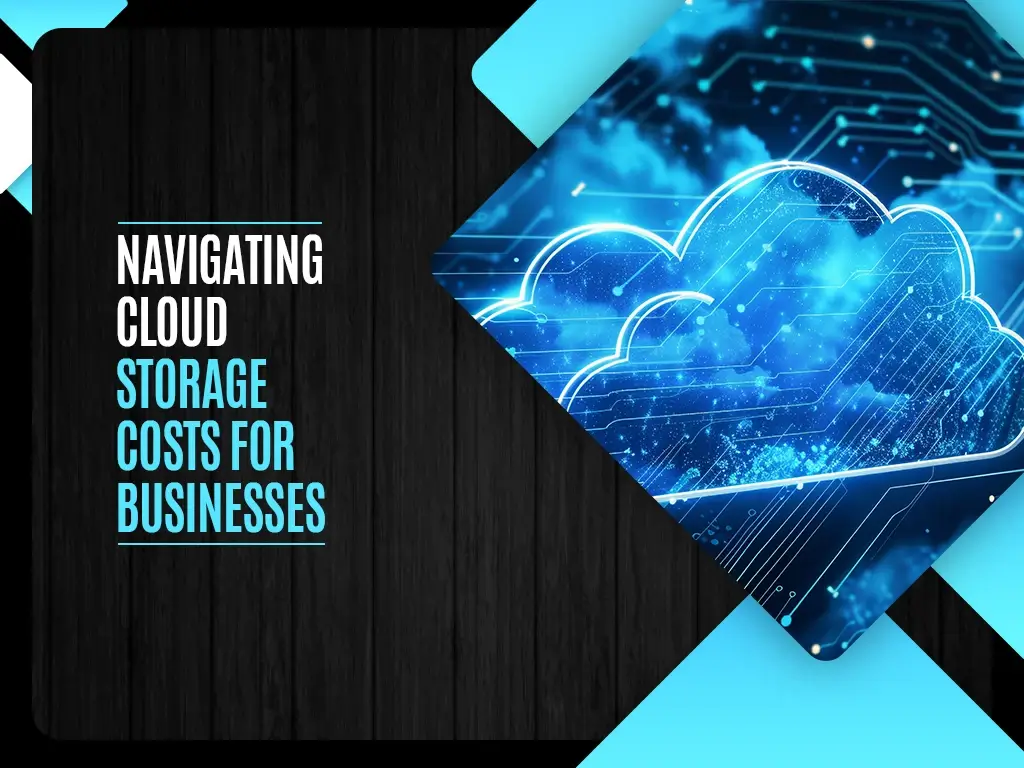Navigating Cloud Storage Costs for Businesses

Remote data storage solutions are crucial for promoting growth and streamlining operations in the digital era. These systems offer a confusing array of pricing structures that can stump even the most seasoned professionals despite their accessibility and flexibility. A strategic mentality combined with foresight and careful planning is necessary to effectively manage the complexities of distant data storage costs. To enable enterprises to negotiate this terrain with caution and financial sense, this paper aims to clarify the intricacies of remote data storage expenses.
Companies can obtain insight into their expenses related to remote data storage by taking a proactive stance and performing in-depth analysis. To optimize resource allocation and save costs, tactics like capacity planning, data lifecycle management, and utilizing various service providers can be implemented. By implementing these precautions, organizations may take advantage of remote data storage options while preserving their financial stability in a constantly changing digital landscape.
Peering into the Esoteric Realm of Cloud Storage Tiers
Understanding the nuances of the service provider’s tiers is essential to understanding the expenses related to remote services. These layers are carefully designed to meet various requirements, from transactional databases that operate in real-time to archival data that receives little access. Every tier has a unique pricing structure determined by factors, including data access frequency, retrieval speed, and durability guarantees. By being aware of these subtleties, enterprises may use remote services more intelligently and optimize functionality and cost with accuracy and foresight.
Unraveling the Enigma of Data Transfer Costs
Organizations have to handle data transmission costs, including outgoing and incoming bandwidth use and data storage costs. Outbound refers to data communicated or retrieved from external endpoints, whereas inbound refers to data that enters the repository. Expert data management strategies are required to navigate the complex world of data transfer expenses. These include employing techniques like data compression, caching, and transfer protocol optimization to reduce unnecessary bandwidth. Understanding cloud storage pricing is essential for maneuvering through these complexities and guaranteeing effective cost control in every data transit and storage facet.
Understanding the Vagaries of Cloud Storage Pricing
It is essential to comprehend the intricacy of distant pricing mechanisms before investigating cost optimization solutions. In contrast to conventional on-premises solutions that have set capital costs, remote expenses change over time for various reasons. These variables include geographic locations, data transport speeds, storage capacities, service levels, and extra features like data protection and redundancy. Businesses must carefully assess their needs and modify strategies to achieve optimal resource utilization and cost-effectiveness in the distant environment. Handling these complexities requires a sophisticated strategy.
Mitigating Costs Through Strategic Capacity Planning
Careful capacity planning is a basic strategy to avoid skyrocketing remote storage costs based on a detailed study of data usage patterns and forward-looking growth estimates. Businesses can avoid the problems associated with over- or under-provisioning by carefully examining past data usage trends and projecting future storage requirements. Maximizing resource allocation minimizes wasteful spending by guaranteeing enough storage capacity available when needed. The capacity to plan allows companies to keep a lean, efficient infrastructure that supports long-term financial viability.
Harnessing the Power of Data Lifecycle Management
Implementing a strong data lifecycle management strategy is one effective way to combat rising storage costs. Organizations can automate operations to transfer obsolete or inactive data to more affordable storage tiers or archival repositories by classifying data based on criteria like relevance and access frequency. This strategy promotes operational efficiency and cost reduction by streamlining data retrieval procedures and improving storage efficiency.
Leveraging Multi-Cloud Architectures for Cost Optimization
Choosing a wide range of providers offers significant cost optimization options beyond simple redundancy and resilience. Organizations can successfully control storage expenses by leveraging variances in pricing structures and geographic coverage by leveraging a diverse pool of service providers. Furthermore, by taking a vendor-neutral stance, companies can negotiate favorable service-level agreements and take advantage of special offers from rival providers. This strategic adaptability fosters resilience and adaptation within the organization’s infrastructure and improves cost-effectiveness.
Deploying Resource Tagging for Granular Cost Attribution
In the cloud context, resource tagging enables comprehensive cost tracking and accountability. Businesses may effectively allocate costs and evaluate consumption trends by accurately labeling cloud resources with metadata tags that indicate qualities such as departmental ownership, project affiliation, and cost center classification. This degree of specificity fosters openness, a culture of fiscal responsibility, and resource optimization amongst organizational units.
Embracing DevOps Practices to Cultivate Cost Awareness
To cultivate a cost-conscious culture, it is necessary to include development team and operational team principles in organizational workflows. By granting access to spending data and encouraging a frugal and efficient mindset, companies can foster a proactive approach to cost consciousness. Real-time tracking of resource consumption is made possible by using automation and monitoring systems, promoting a harmonic integration of technical and financial knowledge and proactive cost reduction measures.
Conclusion: Navigating the Cloud Storage Cost Conundrum with Finesse
Effectively controlling the swings in storage costs becomes essential for preserving competitiveness and sustained resilience in the whirlwind of digital transformation. Organizations can become more adept at handling the intricacies of storage costs by implementing a comprehensive strategy that includes careful capacity planning, effective data lifecycle management, and simplified architectures. In today’s changing digital environment, companies may take advantage of the transformational potential of storage solutions while lowering financial risks and improving operational effectiveness if they are proactive and wise.
Organizations may anticipate and lessen the difficulties brought on by storage expenses by adopting proactive strategies and utilizing insights from data management procedures. Enterprises can simplify processes and allocate resources by implementing effective capacity planning methodologies and optimizing data lifecycle. As the digital landscape changes constantly, this proactive approach helps companies stay competitive and flexible by encouraging a culture of innovation and adaptation in addition to financial restraint.

